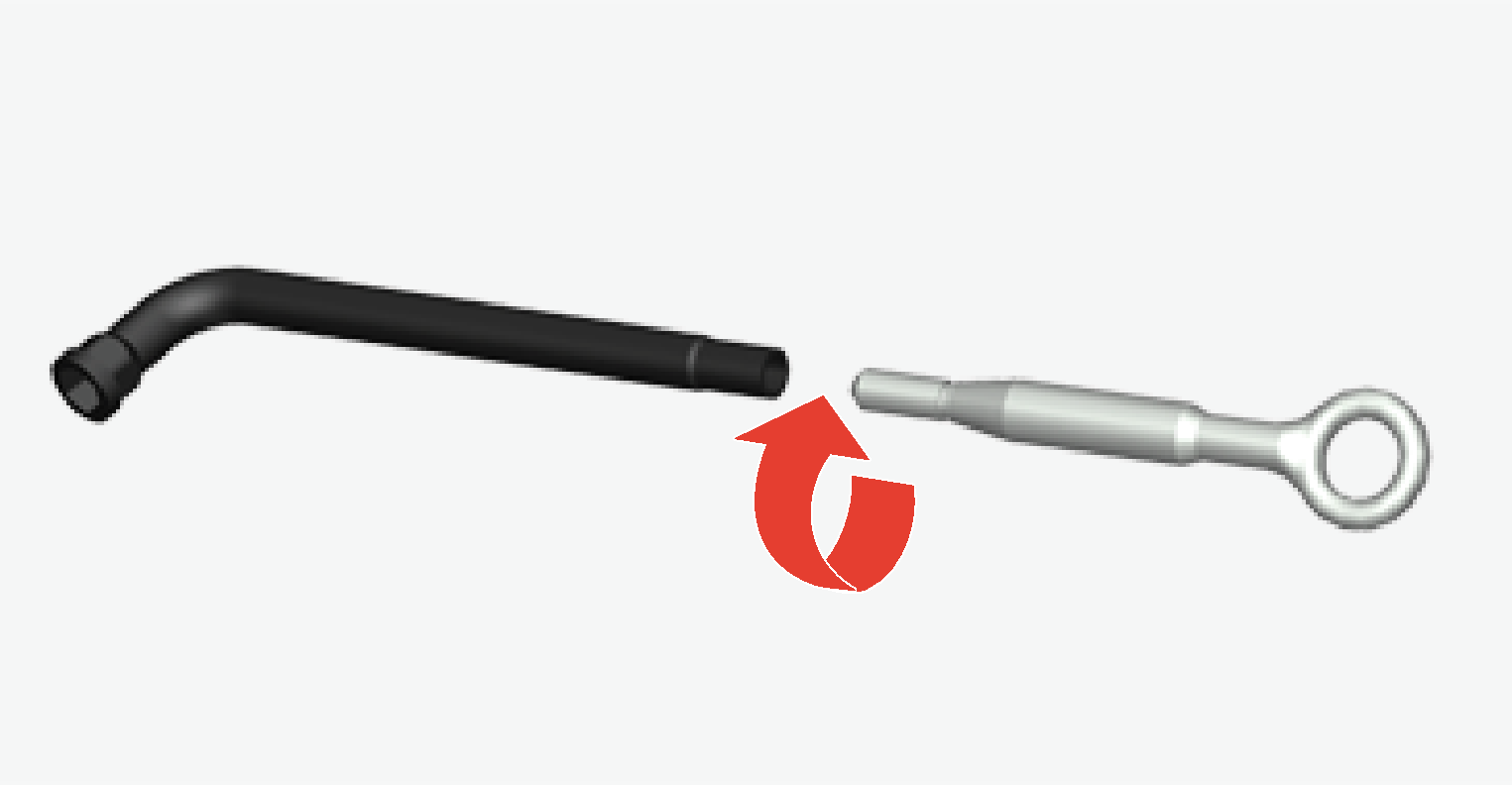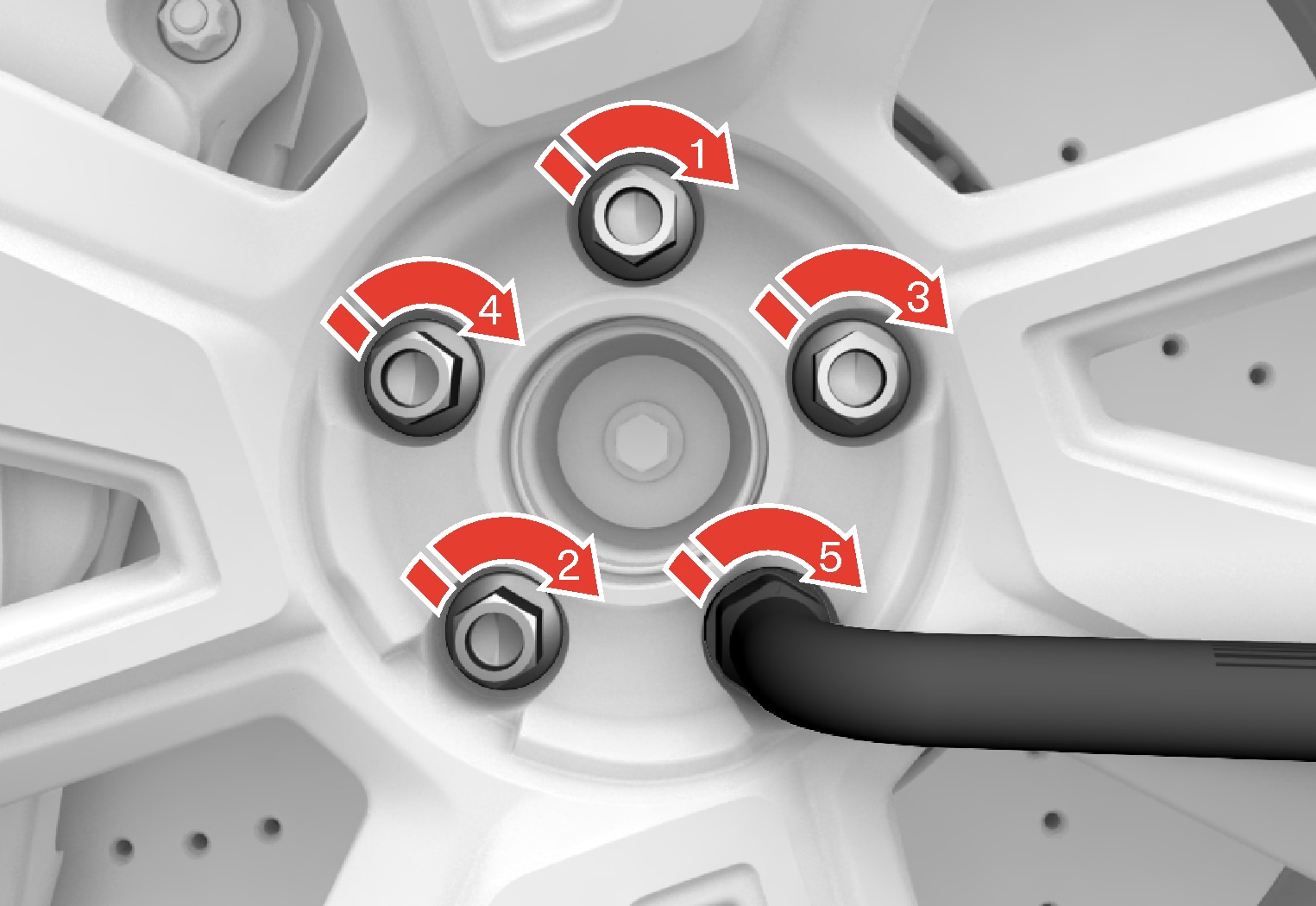Changing wheels
Wheel changes must always be performed correctly. Instructions on how to remove and fit a wheel and what is important to remember are provided below. Check that the tyre dimension is approved for use on the car.
Warning
- If a wheel must be changed in a trafficked environment, passengers must stand in a safe place.
- Use a jack designed for the car when changing wheels. Use supports to secure the car for all other work.
- Never crawl under the car or reach under with a part of your body when it is raised on a jack.
- Passengers must leave the car when it is raised on the jack.
Important
- When the jack is not in use, it must be stored in its place in the foam block in the front cargo area.
- The jack included with the car is only designed for occasional, short-term use, such as when changing a wheel after a puncture. Only the jack belonging to the specific model is to be used to jack up the car. If the car is to be jacked up more often, or for a longer time than is required just to change a wheel, use of a garage jack is recommended. In this instance, follow the instructions for use that come with the equipment.
Removing a wheel
Read through the instructions below before you start. Take out the tools that you will be using before jacking up the car.
Activate the hazard warning flashers and set out a warning triangle if a wheel shall be changed in a trafficked location.
Apply the parking brake and engage gear position P.
Take out the jack, towing eye, wheel wrench and tools for the wheel bolt caps that are fitted in the foam block under the boot floor.
Chock in front of and behind the wheels that remain on the ground. Use, for example, heavy wooden blocks or large stones.
Screw together the towing eye with the wheel wrench until the stop position. The towing eye must be screwed into the wheel wrench as far as it will go.

Remove the wheel nut cap in the middle using the designated tool. Press the tool into the hole in the middle of the wheel nut cap and pull to remove the cap.
With the car still on the ground, use the wheel bolt wrench/towing eye to undo the wheel bolts ½-1 turn by pressing downwards (anticlockwise).
Follow the instructions on how to jack up the car safely.
Raise the car high enough to allow the wheel to be removed to move freely. Remove the wheel bolts and lift off the wheel.
Fitting wheels
The car needs to be raised high enough so that the wheel to be loosened can roll freely.
Clean the surfaces between wheel and hub.
Put on the wheel. Tighten the wheel bolts thoroughly.
Do not use lubricant on the threads of the wheel bolts.
Lower the car so that the wheels cannot rotate.
Tighten the wheel bolts crosswise. It is important that the wheel bolts are tightened properly. Tighten to 140 Nm (103 foot-pound). Check the tightening torque with a torque wrench.

Place the wheel nut cap back over the wheel nuts by making sure it fits using guide markers, then press it into position.
Check the tyre pressure and save the new tyre pressure in the system for tyre pressure monitoring*.
Warning
The wheel bolts may need to be re-tightened several days after the change. Temperature differences and vibration may mean that they are not attached equally as tightly.
Note
- After a tyre has been inflated, always refit the dust cap in order to avoid damage to the valve from gravel, dirt, etc.
- Only use plastic dust caps. Metal dust caps can rust and become difficult to unscrew.